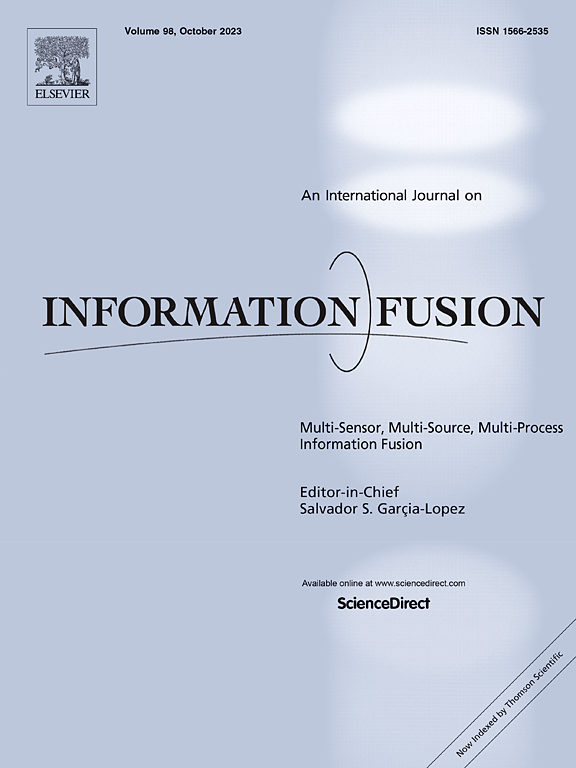MV-BMR:基于实时运动和视觉传感集成的敏捷羽毛球机器人
IF 14.7
1区 计算机科学
Q1 COMPUTER SCIENCE, ARTIFICIAL INTELLIGENCE
引用次数: 0
摘要
本文提出了一种基于运动和视觉传感集成的敏捷羽毛球机器人(MV-BMR),它是一种与人类运动员一起打羽毛球的实时系统。目前的羽毛球机器人擅长处理低速击球,比如高空清场和网球,但在处理高速击球,尤其是短距离击球时却表现不佳。这一挑战来自两个关键因素:羽毛球的飞行时间短,平拍和低平拍的飞行时间在500到1000毫秒之间,以及机器人击球区域的广泛范围。这一问题凸显了设计一种动态、精确的羽毛球机器人的必要性。我们提出了一种创新的两阶段方法,结合轨迹预测和控制模块来应对这一挑战。在第一阶段,我们设计了毽子早期预测网络(SEPNet),通过安装在球拍上的惯性测量单元(IMU)来估计机器人的击球区域,使机器人在球员击中毽子后立即移动。在第二阶段,我们采用数据驱动的方法,利用检测到的羽毛球轨迹来确定命中点,并通过非线性模型预测控制(NMPC)控制相应的机器人准确命中毽子。我们已经实现了这样一个实时系统,并进行了广泛的实验。短距离射击的平均成功率为92.2%,最长的反弹为68次,这表明我们的设计有效地克服了挑战。视频演示可以在https://youtu.be/lQo1Ls5Rj3o上找到。本文章由计算机程序翻译,如有差异,请以英文原文为准。
MV-BMR: A real-time Motion and Vision Sensing Integration based Agile Badminton Robot
This paper presents the Motion and Vision Sensing Integration-based Agile Badminton Robot (MV-BMR), a real-time system that plays badminton with human players. Current badminton robots excel at handling low-speed strikes, such as high clears and net shots, but struggle with high-speed cases, particularly short shots. This challenge arises from two key factors: the shuttlecock’s short flight time, which ranges from 500 to 1000 ms for flat and low flat shots, and the extensive range of the robot’s hit zone. This lingering problem highlights the necessity of designing a dynamic and precise badminton robot. We propose an innovative two-stage approach that incorporates trajectory prediction and control modules to address this challenge. In the first stage, we design the Shuttlecock Early Prediction Network (SEPNet) to estimate the robot’s hit zone with an Inertial Measurement Unit (IMU) mounted on the racket so that the robot can move immediately after a player hits the shuttlecock. In the second stage, we employ a data-driven method, which exploits detected trajectories of shuttlecocks to determine hit points and control the corresponding robot to accurately hit the shuttlecock with Nonlinear Model Predictive Control (NMPC). We have implemented such a real-time system and conducted extensive experiments. The average successful hit rate for short shots of 92.2% and the most extended rallies of 68 demonstrates that our design effectively overcomes the challenges. The video demonstration is available at: https://youtu.be/lQo1Ls5Rj3o.
求助全文
通过发布文献求助,成功后即可免费获取论文全文。
去求助
来源期刊

Information Fusion
工程技术-计算机:理论方法
CiteScore
33.20
自引率
4.30%
发文量
161
审稿时长
7.9 months
期刊介绍:
Information Fusion serves as a central platform for showcasing advancements in multi-sensor, multi-source, multi-process information fusion, fostering collaboration among diverse disciplines driving its progress. It is the leading outlet for sharing research and development in this field, focusing on architectures, algorithms, and applications. Papers dealing with fundamental theoretical analyses as well as those demonstrating their application to real-world problems will be welcome.
 求助内容:
求助内容: 应助结果提醒方式:
应助结果提醒方式:


